有村 智恵
Chie Arimura
Aiming to play to the heart
Face your body and make an effort to continue playing golf
July 14, 2022
![Professional Golfer [Chie Arimura]](/ito-sports-project/assets/img/interview/005/pct_mv.jpg)
Interview: Takaya Hirano / Photos: Godai Inoue
Never waste one stroke
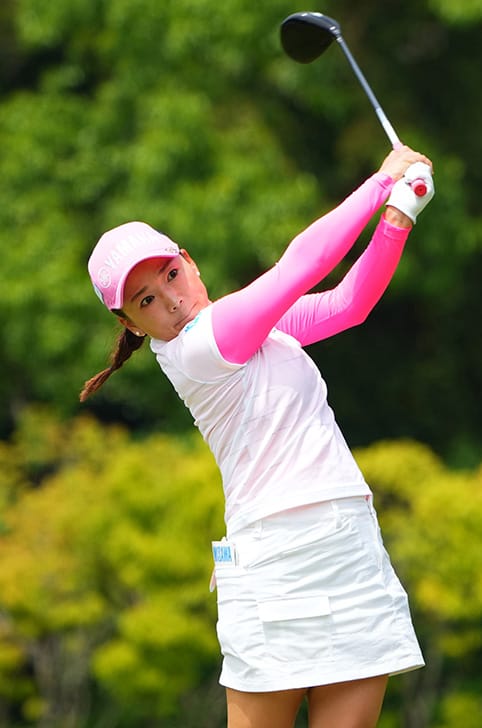
©Zone inc.
- ITO: You started competing at the age of 10 and have been active for a long time. What do you think is the appeal of golf?
-
Arimura: There are many, but one is that you can enjoy nature. For example, St. Andrews, the venue of the British Open, is a course that is not very artificial and has a lot of nature. In Japan, many courses (with many mountains) are very different in elevation. There are four seasons, there are many places with beautiful cherry blossoms and autumn leaves, and some courses have a view of the city or the ocean, so you can enjoy a variety of scenery.
Another is that you can enjoy the game while conversing with your fellow competitors. This is a feature not often seen in other sports, and people of all genders and ages can enjoy playing together. We, professionals sometimes play rounds of golf with junior players, and recently we had the pleasure of playing golf with 91-year-old Rokusaburo Michiba, the famous Japanese cuisine chef.
- ITO: What kind of golfer do you consider yourself to be while competing with various people?
-
Arimura: It is important to me to spread the goodness and excellence of golf. It is said that golf is a battle against yourself, but I have learned important things in life through golf. For example, when you make a mistake, it is important not to dwell on it, but to change your mind and think about how to make the most of it to the next time. Or the mentality to focus on your own game even if you feel pressure from the difference in score when other players play well. I think these are things that can be applied in everyday life and in other jobs. I want to be a golfer who can express these thoughts and feelings, what kind of life I have led, and what kind of outlook on life I have through my play, and convey them to people who see my play.
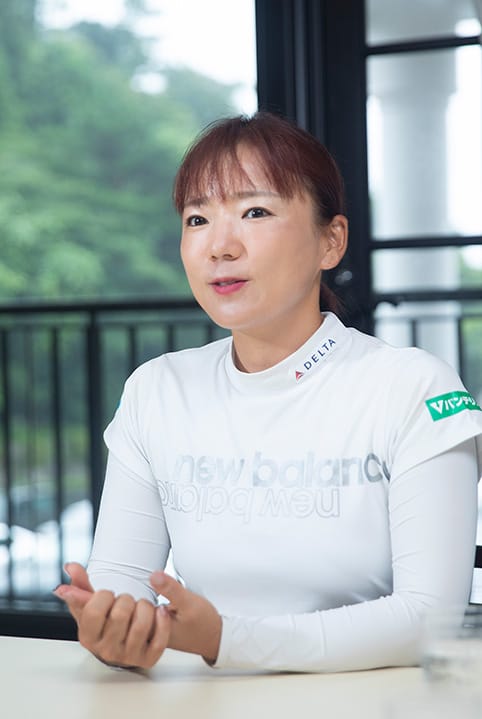
- ITO: Is this part of Arimura’s personality that people say she is strong on the last day?
-
Arimura: I always have the spirit of never giving up until the end, no matter what the situation. Even if my performance is poor, I try not to think, "No matter what, even if I get a birdie, I will not improve my ranking," but rather, I try to make something that will lead to the next step. I strongly try not to waste a single stroke, so when I have a good day, it can lead to an explosive score on the last day. Above all, I believe that my attitude of continuing to hit the ball as hard as I can will resonate with people who see me, and I want to make sure I never forget that.
- ITO: How did you develop such a mindset?
-
Arimura: Ai Miyazato is a great role model in our generation. She is two years my senior at Tohoku High School, and I met her when I was in junior high school. She has been very successful since her high school days, and I feel that I have learned a lot from watching by her side as she suffered under pressure and never forgot to consider others, as well as her gentlemanly attitude toward golf.
80% of what you need to watch out for is conditioning
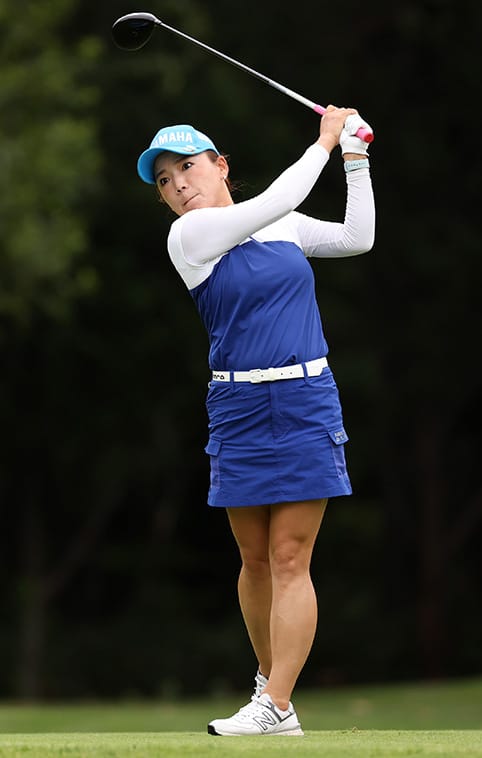
©Zone inc.
- ITO: While there are certain policies that have always been important to you, in terms of training, has your preparation changed over the course of your career?
-
Arimura: Yes, in my early 20s, I did a lot of hard training, but in my late 20s, I began to feel stiffness in my body that affected my flexibility and range of motion. In my 30s, when I analyze why I am not in good shape, I find that I have stiffness in my body and my swing is not turning the way I want it to, and I feel that I am slowing noticing the stiffness.
Now I also have to train myself to become more aware of my body condition. For example, if the sensation in the soles of our feet becomes dull, I won’t be able to read the green and identify the line to the cup without knowing the slope of the fairway or green, and I won’t be able to respond accordingly to the slope. So, I take care of these problems by cultivating the sensation in the soles of my feet through training. When I was younger, I used to wonder why I was doing such easy things (laughs), but it is necessary. I really spend a lot of time to face my body and be more aware of it.
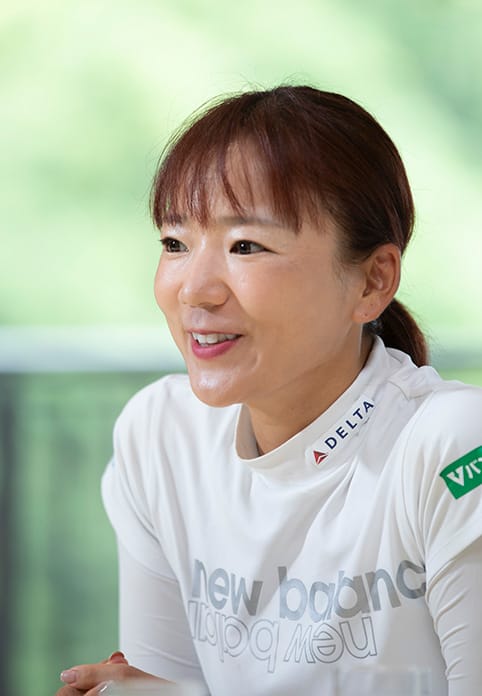
- ITO: So, the importance of conditioning is that much greater.
-
Arimura: It is said that the three qualities of an athlete are “mind, technique, body”, but I believe the correct order for me is “body, mind, technique”.
In the summer, when the weather is hot and I am in a tough position on the second day of the competition, I may suddenly think, "It would be easier not to qualify, I can rest for two days, ......" but there is no reason other than physical fatigue to have such a feeling (mind).When adjusting your golf swing, it is not uncommon to find points of improvement in your body rather than your technique. Sometimes I feel like, "For some reason, my body floats," and I am unsure about my swing, but in fact, training my trunk can solve the problem. Recently, I have been talking a lot with my coach about whether issues should be compensated for with training or swing, but about 80% of what we need to pay attention to is body conditioning. I wish I had taken better care of my body when I was younger.
- ITO: I think this is true because the base of the swing is established at a young age.
-
Arimura: That's right. When I went to the U.S., players there did not hit the ball at all on the driving range. Of course, if the swing plane is not stable, it is important to repeat the swing training. But once the plane is determined to some extent, it is a matter of how to keep it. In the United States, the emphasis was on how to keep my body in good shape and keep reproducing the swing. So, either I have to choose to be in the gym to work out, or to play short games to adjust the feeling of the shot. My thinking changed a lot back then, that if my body was in good shape, I could make some good swings.
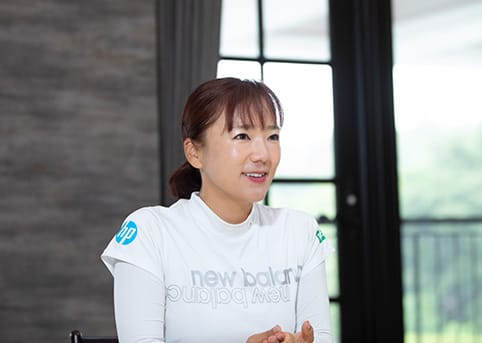
- ITO: It was in 2013 that you participated in a tour of the United States. So, there was a great stimulation in your thinking.
-
Arimura: I was 25 years old, my body was changing, and I was in a slump. It was a time of real twists and turns, and I began to think about it a lot. I did some hard training under a U.S. trainer using various equipment, but my body became stiff and I felt that I was not suited for it.
-
I also regret that my slump could have been much shorter if I had solid knowledge and made a concrete plan with my coach to improve my swing. However, there are some things that can only be known by trying. Now, I pay attention not only to my own sensations but also to have my coach and trainer look at me objectively so that I can notice which parts of my movements are stiff, and we are having a very good conversation about how to improve my play.
Constant care is important for good play
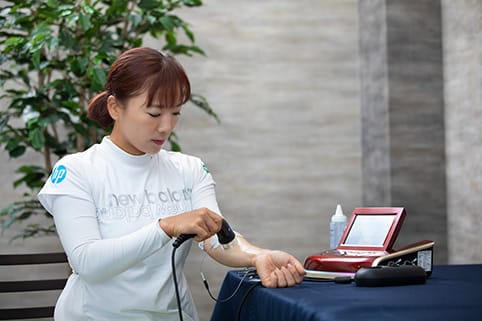
- ITO: I understand that you purchased therapeutic ultrasound device in Japan before going to the U.S. Was this a time when you became more interested in self-care as well?
-
Arimura: It was the summer of 2011 when I injured my left wrist and was diagnosed with TFCC (Triangular Fibrocartilage Complex) injury. I purchased the device used at the osteopathic clinic where my trainer at the time worked. It didn't take away the pain immediately, but when I moved my wrist a little after the treatment, I felt that the pain had lessened, so I continued to use it every day, thinking that it would get better if I kept using it. However, at the time I didn't have the knowledge myself, so I just left it up to my trainer who asked others how to use the device, and the trainer used it for me.
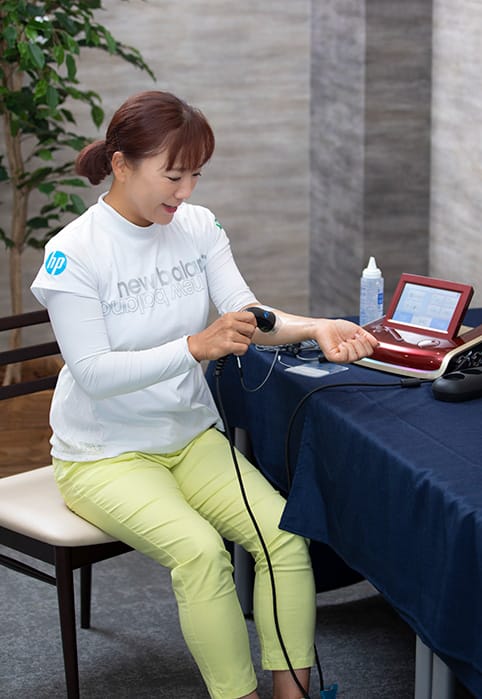
- ITO: How do you currently use the device?
-
Arimura: I had not used it since my wrist had healed, but in May 2009, I began to feel a lingering sticking sensation in the hamstring of my right leg, and gradually the sticking sensation became stronger even when I just stretched my leg out a little. When I went to a rehabilitation facility, I was told that "the muscles were sticking together in a very deep part of the leg where could not be reached by hand”. I was also told that “it could be reached by ultrasound”, then I remembered that "I used to use it before!”, and started using another therapeutic ultrasound device from ITO.
I have been taught how to use the device and now I can use several patterns on my own.
I do this carefully, especially in areas where tension is strong. As we age, the human body becomes stiffer and stiffer, even if we are not competing. In particular, not the surface of the muscles, but the deeper areas, such as where the bones and muscles are connected, become quite stiff, and even if the surface is loosened, the inner is not relaxed, so the body tends to repeat the process of becoming stiff again quickly. Constant care is important for the deeper areas. I use it all the time, not just when it hurts. I spend 16 minutes on one spot and sometimes spend 30 minutes or more just on treatment. When I use it, the area where the treatment device was applied warms up, and I can feel my muscles relax. I always check by moving my body after finishing the treatment, but the sensation of sticking is reduced.
- ITO: How does it affect your play when you feel stiffness in the muscles?
-
Arimura: When the condition was bad, even when my knees were extended, there was a sticking sensation, as if I was bending forward. In golf, when you swing, you always have to bend forward and make a turning motion. If there is a sticking sensation, it is inevitable that power escapes to other places and the center of gravity cannot be shifted properly. Also, if you feel pain, you have to cover up that area and put stress on another area, creating new tension by the time you finish the 18th hole. The back and hips are also prone to tension, and to put it in a slightly extreme way, the range of motion of the swing itself becomes limited.
I want to face my body and continue to play golf
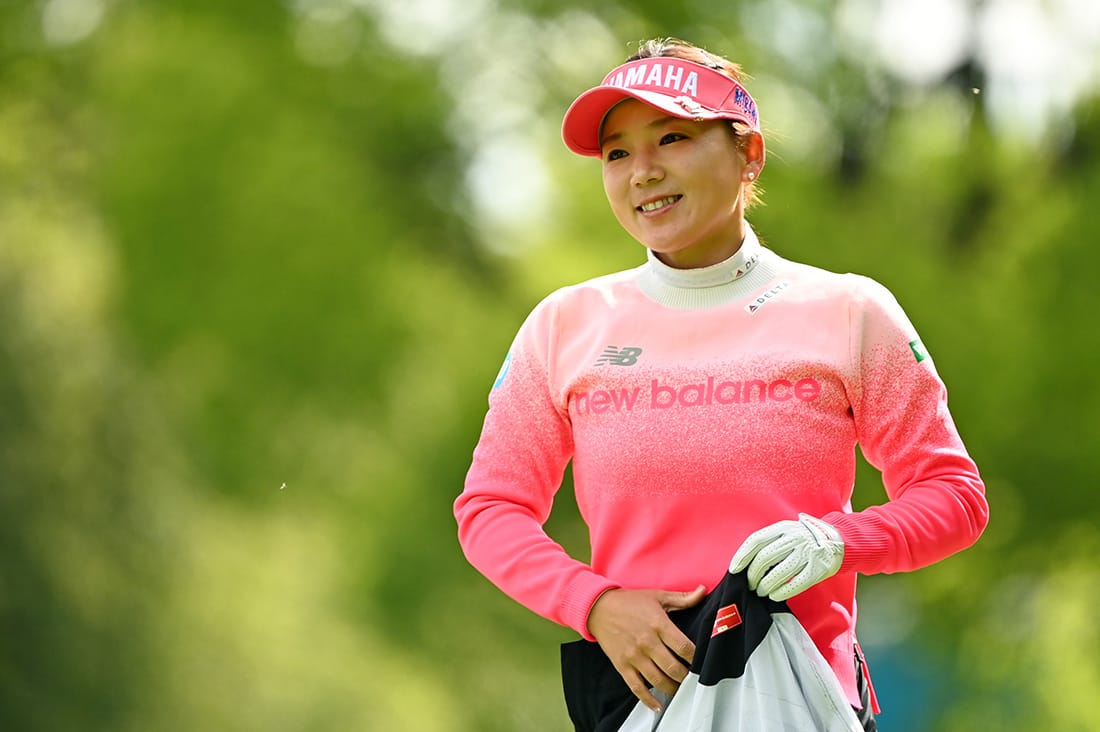
©Zone inc.
- ITO: I hope you will take good care of your body and play for a long time. Finally, what are your goals for the future?
-
Arimura: I still want to enjoy golf all the time, and I hope to sustain my skills to be a good competitor. As a golfer, I look forward to playing golf with many different people in many different places, and I want to continue to do so for as long as possible. As women, our bodies change with age, childbirth, and other physical changes, and I would like to make an effort to continue to play golf while keeping a firm grip on my body.
Also, I recently experienced the position of producing a tournament, and seeing other players having fun while doing so was an emotional experience that was different from competing in a tournament. I would like to continue to be involved in golf in any way I can.
![Professional Golfer [Chie Arimura]](/ito-sports-project/assets/img/interview/005/pct_bio.jpg)
Born on November 22, 1987 in Kumamoto Prefecture.
Started playing golf at the age of 10 on her father's advice. In her third year of junior high school, she won the National Junior High School Golf Championship. After graduating from Tohoku High School, a prestigious golf school, she passed the 2006 professional golf test as the top finisher. In 2008, her second year as a professional, she won the "Promise Ladies Tournament” for the first time. The following year, in 2009, she made a great leap forward, finishing 3rd in the money ranking.
In 2012, she won her first major championship in Japan at “JLPGA Championship Konica Minolta Cup”, and has been playing on the U.S. Tour since 2013.
In 2018, she won the “Samantha Thavasa Girls Collection Ladies Tournament”, returning to the championship after a six-year absence.
